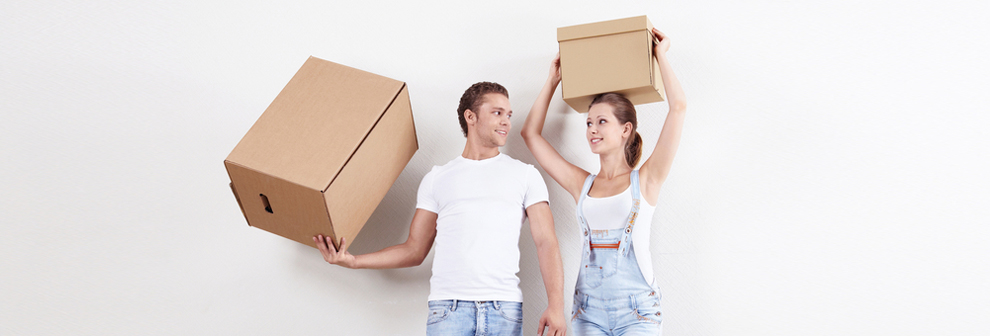Transform Your Home with Minimalist Design
Posted on 08/05/2025
In a world that is increasingly cluttered with distractions and excess, the allure of minimalist design is undeniable. The minimalist design isn't merely a trend; it's a paradigm shift in how we approach living spaces. By embracing simplicity, functionality, and intentionality, you can transform your home into a sanctuary of tranquility and style. This comprehensive guide explores the essentials of minimalist design and provides practical steps to implement this aesthetic in your living space.
The Essence of Minimalist Design
Minimalist design is centered on the idea that "less is more." This concept involves paring down to the basics and keeping only what is necessary, functional, and beautiful. The roots of minimalist design can be traced back to post-World War II, particularly in the works of architects and designers like Ludwig Mies van der Rohe and Frank Lloyd Wright. Their focus was on clean lines, open spaces, and a seamless connection between the indoors and the natural world.
In essence, minimalist design champions three fundamental principles:
- Simplicity: Clear lines, uncluttered spaces, and a restrained color palette.
- Functionality: Every object has a purpose and contributes to the overall design.
- Intentionality: Thoughtful selection and placement of items, creating a harmonious atmosphere.

Getting Started: Decluttering Your Space
Decluttering is the first step in transforming your home with minimalist design. It's about getting rid of unnecessary items that do not add value or serve a purpose. Here's how to start:
Step 1: Assess Each Room
Begin by walking through each room and identifying items that you haven't used in the last six months. Separate these items into categories: donate, sell, recycle, or toss.
Step 2: Maximize Storage
Invest in smart storage solutions to keep your space organized. Opt for multifunctional furniture such as ottomans with storage or beds with built-in drawers.
Step 3: Choose Quality Over Quantity
Instead of filling your space with many items, focus on a few high-quality pieces that you truly love and that serve a purpose.
Color Palette and Materials
In minimalist design, color and materials play a crucial role. Neutral and muted tones create a sense of calm and spaciousness. Whites, greys, beiges, and blacks are the go-to colors, often accented with natural materials like wood, stone, and metal.
Wall Colors
Stick to neutral colors for walls to serve as a blank canvas that enhances the room's architecture and allows other elements to stand out. A white wall, for instance, can make a space look larger and more airy.
Materials
Favor natural materials over synthetic ones. Wood, stone, wool, and cotton bring a sense of warmth and texture to a minimalist space. The key is to create contrast through textures while maintaining a cohesive color theme.
Furniture Selection
Furniture in a minimalist home should be simple, Sleek, and functional. Look for pieces with clean lines and avoid overly ornate designs. Here are some tips for selecting minimalist furniture:
Sofas and Chairs
Opt for sofas and chairs with a straightforward silhouette. A neutral-colored sofa with a streamlined form can be paired with a few accent pillows for a touch of comfort and style.
Tables
Choose tables with smooth surfaces and minimal detailing. Glass or light wood tables can keep the area feeling open and uncluttered.
Storage Solutions
Incorporate storage that blends seamlessly with your furniture. Floating shelves, built-in cabinets, and under-bed storage can help keep your space tidy while maintaining a minimalist aesthetic.
Lighting and Decor
Proper lighting is essential in a minimalist home. Natural light is always preferable, but artificial lighting can also be strategically used to complement the design:
Natural Light
Maximize natural light by using sheer curtains or blinds that can easily be opened. Large windows, skylights, and light-colored walls can help brighten the space.
Artificial Lighting
Choose lighting fixtures that are simple yet elegant. Use a combination of ambient, task, and accent lighting to create layers of light. Pendant lights, floor lamps, and wall sconces with clean lines can add to the minimalist feel.
Decor
When it comes to decor, less is more. Select a few statement pieces that add personality to your space without making it feel cluttered. Abstract art, a single large plant, or a piece of sculptural pottery can serve as focal points.
Incorporating Technology
In today's digital age, incorporating technology into your home design is essential. However, the key is to integrate it seamlessly without compromising the minimalist aesthetic:
Smart Home Devices
Use smart home devices to reduce the number of physical objects in your space. For example, a smart thermostat or a multi-functional speaker can replace several standalone devices.
Cable Management
Keep cords and cables out of sight using cord organizers, cable boxes, or by opting for wireless solutions wherever possible.

Maintaining Minimalism
Achieving a minimalist home is just the beginning; maintaining it is an ongoing process. Here are some tips to keep your space clutter-free:
Regular Decluttering
Make decluttering a habitual task. Regularly assess your space and remove items that no longer serve a purpose. A monthly or seasonal purge can help keep your home streamlined.
Mindful Purchasing
Be intentional with your purchases. Before buying something new, consider if it aligns with your minimalist ethos and if it will genuinely add value to your home.
Functional Decor
Choose decor items that are not only beautiful but also functional. For example, a stylish tray can serve as a place to corral keys and mail.
Conclusion
Transforming your home with minimalist design is an enriching and liberating journey. By embracing simplicity, functionality, and intentionality, you can create a serene and stylish environment that enhances your quality of life. Whether you're starting from scratch or refining an existing space, the principles of minimalist design can help you create a home that is both beautiful and harmonious.
Remember, minimalist design is not about deprivation; it's about making room for the things that truly matter. By thoughtfully curating your space, you can enjoy the lasting beauty and tranquility that minimalism offers.



















